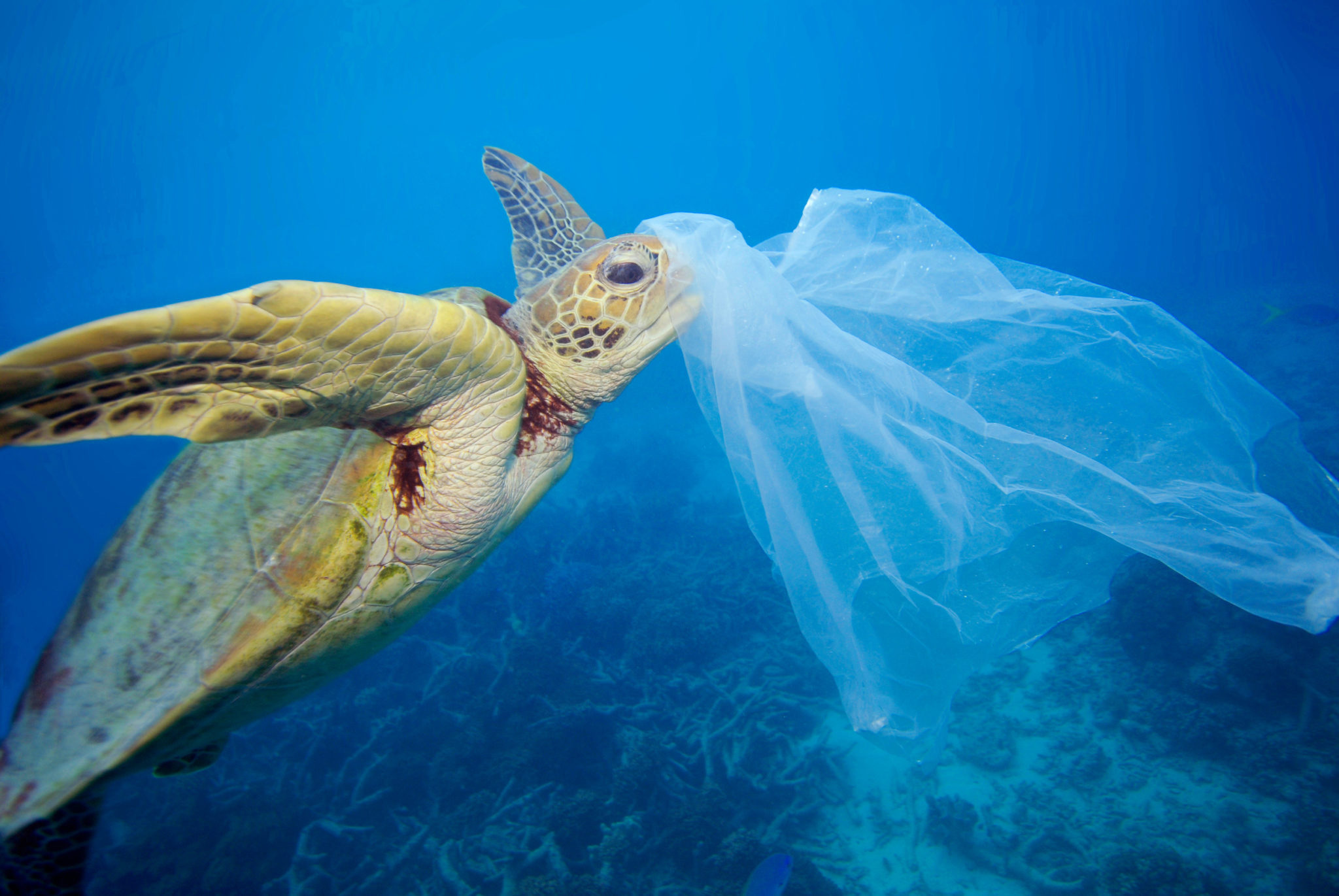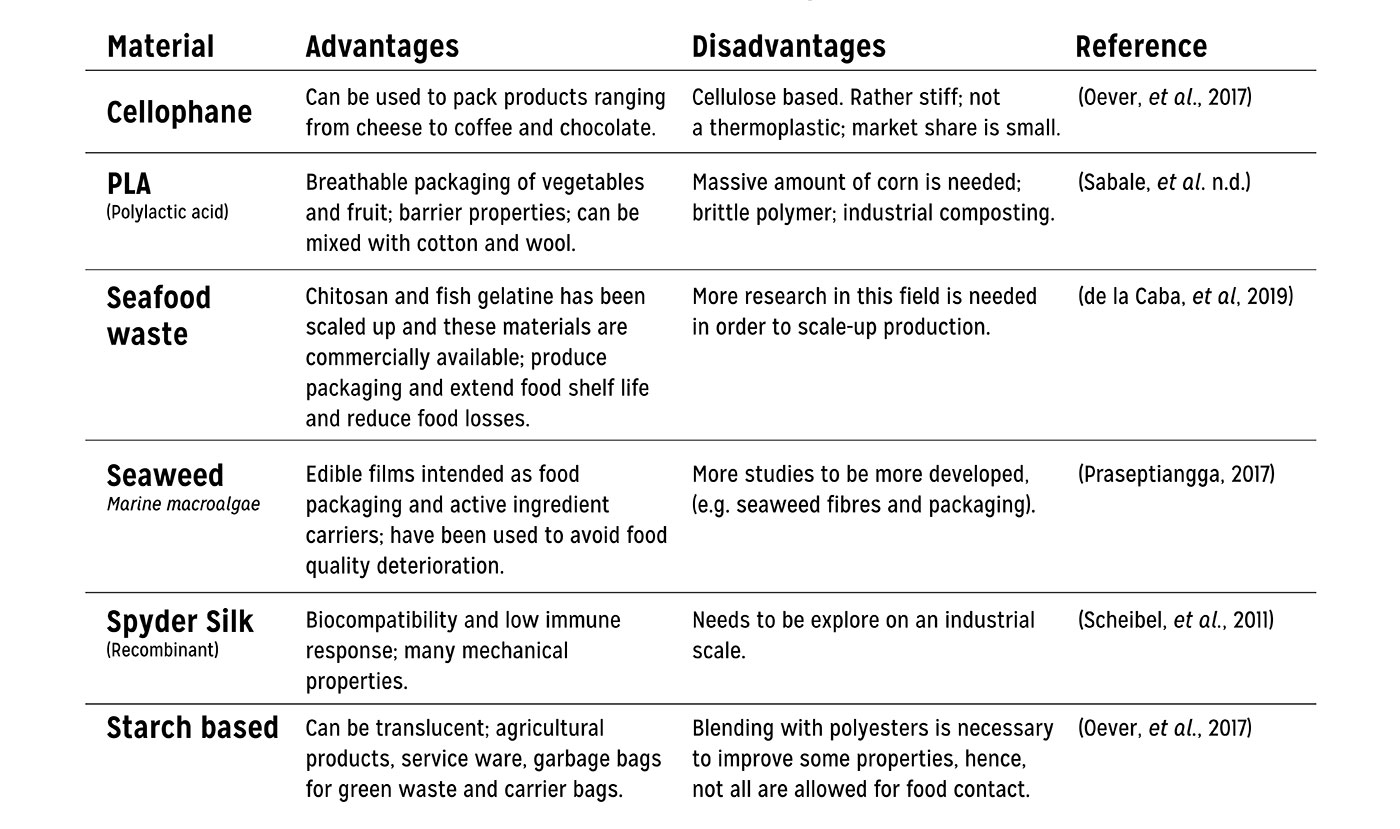1. State of the Art¶
'Those who do not learn history are doomed to repeat it.' George Santayana (1863–1952)
 Underwater image of a turtle with plastic on his head. Plastic Polution | Greenpeace.org
Underwater image of a turtle with plastic on his head. Plastic Polution | Greenpeace.org
Problematic¶
Packaging Design nowadays drives many challenges from externalities such as environmental and social impacts. Hence, ahead of developing a new solution, one must review and define the problematic. Many disposables come from groceries, but also from mono-use items. After a first review, we can identify some issues to be resolved:
- Recycling reduces waste by consuming other resources (e.g. energy, transportation, water, chemicals).
- The different types of plastics used in packaging present recycling challenges. Sun, oxygenation or microorganisms cause degradation and loss (Dahlbo, et al., 2018); (Singh & Cooper, 2017).
- In the study made in Portugal by O'Donovan et al., on microplastics in the marine environment, revealed oxidative and toxicological damage in biomarkers of * Scrobicularia plana, a bivalve at the base of the food web, important due to the cumulative effect of the species they feed on, including humans. (O'Donovan et al., 2018).
- Non-reusable paper bags* require a lot of resources (i.e. water and energy, raw materials and chemicals) (Leonard, 2010); (McDonough, 2014).
- Biodegradable plastic have a short shelf life and are not recognized on packaging separation lines and are wasted as a resource, ending up in landfills or incineration. (Leonard, 2010).
Research¶
It is already known that linear industrial model is unsustainable. Many changes must occur in order to achieve a Circular Economy. Not only closing the loop is urgent, but also planning the design for a behaviour change should be required, so that we altogether advocate and build a sustainable global society.
Design for Sustainable Behaviour¶
- The development of innovative science and technology, while beneficial for reducing environmental impact, does not appear to affect most people's behavior in terms of conscious or responsible consumption of the various products. In order to reduce the global environmental burden, the transformations to occur must be considered; solutions to reduce waste may be related to a change in consumer behavior before buying (Song, Li, & Zeng, 2015).
- The Designer must be a mobilizing agent in transforming the economy into a new sustainable economy paradigm that respects people, biodiversity, and ecosystems. It is necessary to understand the impact of what we design and produce, directly (end of life product waste), and indirectly (management of all effects generated from production, transportation, packaging, sale and consumption), as well as all resources used at these stages.
- Life-cycle analysis (LCA) is not sufficient: it is an eco-efficient approach focusing on reducing negative environmental impacts, rather an eco-effective approach results in a positive impact, promoting the prosperity and resilience of societies and ecosystems (Bocken, et al., 2016).
- Waste management is not a perfect solution - it demands a lot of effort and municipal costs; fails and pollutes the environment contaminating the sea, soils, water, and air we breathe.
- Choosing packaging with a long shelf life contributes to waste reduction (Cooper, 1994).
Local¶
The environmental impact of excess packaging and toxic waste has led to the resumption of zero waste bulk stores in several countries, including Portugal.
There is a strong textile industry in the country, with an interest in continuing to expand markets and updating its practices on environmental impact, and it is of great importance to invest in researching national solutions to a worldwide problem. This solutions can contribute to reinforce the identity of the Portuguese textile industry, but at the same time solve social, economic and ecological by resolving environmental and sustainability problems.
In addition, Portugal, is a country with a history intertwined with the sea. Knowing that disposable packaging sooner or later contaminates the oceans, we have to understand this problem as ours, and change the consumption paradigms.
Producing with local resources, promoting an longer use life and predicting a positive impact after disposable, not only we close the loop but also contribute to a resilient system.
By analyzing the results (see table 1), one can identify different opportunities for developing sustainable reusable food packaging. Initial research concludes that many materials from nature, such as spider silk, seaweed or seafood, cornstarch or bio based plastics such as polylactic acid (PLA), are relevant and highly applicable to food packaging, meeting the sustainable imperative. However, some bioplastics, such as PLA, are not compostable at home (i.e. need higher temperature and humidity; they are not cradle to cradle) and therefore this study recommends limiting their use in packaging. considering a zero waste path. (Delgado & Forman, 2019) On the other hand, Nature Based Design approaches reveal plausible and efficient solutions for the development of sustainable packaging and systems.<
"Nature-based materials to develop sustainable food packaging", Carolina Delgado & Gabriela Forman (2019), 4th INTERNATIONAL CONFERENCE ON NATURAL FIBERS, 2019

Table 1: Materials Properties, Carolina Delgado & Gabriela Forman (2019)
Material Driven Design¶
BioBased Materials - alternatives such as natural, biofabricated or biomass fibers reveal opportunities. Biodegradable polymers from renewable resources promote circular economy, and other advantages include their abundance, low density and biodegradability (Sánchez-Safonta, et al., 2018); (Oever, et al., 2017).
HYPOTHESIS¶
By using Nature-Based Design in the development of a solution for packaging for dry food consumption in bulk sales stores, finding Bio-based material and home compostable packaging, we can promote a sustainable behaviour and resolve the sustainable problems identified.
Methodology¶
(WIP)
Nature based Design¶
Biophilia hypothesis¶
Biomimicry¶
Biomimetic seeks Nature-based Solutions: using the green standard for innovations and valuing nature for what can be learned from it, improving marketing and financial challenges through the efficient use of energy and resources (Benyus, 2008) (Vandevenne, et al., 2015).
Resilient Design¶
Useful links¶
References¶
- Benyus, J. M. (2008). Biomimicry: innovation inspired by nature (repr). New York, N.Y: Harper Perennial.
- Bocken, N. M. P., de Pauw, I., Bakker, C., & van der Grinten, B. (2016). Product design and business model strategies for a circular economy. Journal of Industrial and Production Engineering
- Boylston, S. (2009). Designing sustainable packaging. London: Laurence King.
- Braungarten, M., & McDonough, W. (2014). Cradle to Cradle. São Paulo: Editorial Gustavo Gili
- Cooper, T. (1994). Beyond recycling: the longer life option
- Chen, J. L., & Lee, C.-L. (2017). Developing Sustainable Innovative Products for the Bottom of the Pyramid by Biomimetic Design Concepts
- Dahlbo, H., Poliakova, V., Mylläri, V., Sahimaa, O., & Anderson, R. (2018). Recycling potential of post-consumer plastic packaging waste in Finland
- Delfino, R. (2013). Design de embalagens de bens alimentares para o desenvolvimento sustentável. Faculdade de Arquitetura Universidade de Lisboa.
- Delgado, C., & Forman, G. (2019). Nature-based materials to develop sustainable food packaging. 2. Porto: Universidade do Minho.
- Forman, G. A. da C. S. (2016). The importance of biotechnology in the textile industry
- Franco, M. A. (2017). Circular economy at the micro level: A dynamic view of incumbents’ struggles and challenges in the textile industry
- Gupta, S., Dangayach, G. S., & Singh, A. K. (2015). Key Determinants of Sustainable Product Design and Manufacturing
- Haffmans, S., Gelder, M. van, Hinte, E. van, & Zijlstra, Y. (2018). Products that flow: circular business models and design strategies for fast-moving consumer goods. Amsterdam: BIS Publishers.
- Johnson, B. (2013). Zero waste home: the ultimate guide to simplifying your life. Penguin Books.
- Kaspar, J., & Vielhaber, M. (2017). Sustainable Lightweight Design – Relevance and Impact on the Product Development & Lifecycle Process
- Köhler, A. R. (2013). [Challenges for eco-design of emerging technologies: The case of electronic textiles] (https://doi.org/10.1016/j.matdes.2013.04.012)
- Kumari, P., Singh, S. S. J., & Rose, N. M. (2013). Eco – Textiles: For Sustainable Development. 4(4), 12.
- Lebreton, L., Slat, B., Ferrari, F., Sainte-Rose, B., Aitken, J., Marthouse, R., … Reisser, J. (2018). Evidence that the Great Pacific Garbage Patch is rapidly accumulating plastic
- Leonard, A. (2010). A História das Coisas (ed. brasileira digital 2011). Rio de Janeiro: Zahar.
- Macnab, M. (2012). Design by nature: using universal forms and principles in design. Berkeley, CA: New Riders.
- Moskowitz, H. R. (Ed.). (2009). Packaging research in food product design and development. Ames, Iowa: Wiley-Blackwell.
- Niinimäki, K. (2011). From Disposable to Sustainable. 296.
- O’Donovan, S., Mestre, N. C., Abel, S., Fonseca, T. G., Carteny, C. C., Cormier, B., … Bebianno, M. J. (2018). Ecotoxicological Effects of Chemical Contaminants Adsorbed to Microplastics in the Clam Scrobicularia plana
- Oever, M. van den, Molenveld, K., Zee, M. van der, & Bos, H. (2017). Bio-based and biodegradable plastics: facts and figures: focus on food packaging in the Netherlands
- Ruano, D. S. (2016). Symbiotic Design Practice
- Santos, S. (2016). Introdução à economia verde no contexto da política europeia (1a edicão). Lisboa: Plátano Editora.
- Sánchez-Safonta, E. L., Abdulaziz, A., Lagarónb, J. M., & Cabedo, L. (2018). Biocomposites of different lignocellulosic wastes for sustainable food packaging applications
- Singh, J., & Cooper, T. (2017). Towards a Sustainable Business Model for Plastic Shopping Bag Management in Sweden
- Stoffels, P., Kaspar, J., Baehre, D., & Vielhaber, M. (2017). Holistic Material Selection Approach for More Sustainable Products
- Vandevenne, D., Verhaegen, P. A., Dewulf, S., & Duflou, J. R. (2015). Product and Organism Aspects for Scalable Systematic Biologically-Inspired Design